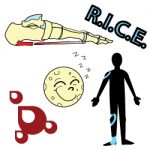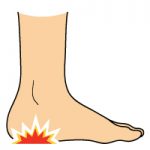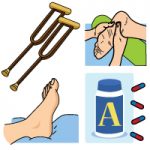Healing Times Depend on a Variety of Factors
Healing times vary depending on the following:
- The severity of the injury or condition
- The amount of rest you’re getting
- How dedicated your are to treating the injury (whether it’s with RICE, blood flow, taping, etc.)
- How long you’ve had the injury (is it new or recurring?)
- The type of injury or condition you’re trying to heal (every injury will have a different estimated healing time)
- Other factors that vary from person to person — everyone is different, so there is no concrete timeline for healing any injury
The Healing & Re-Injury Cycle
 It’s important to understand that healing involves re-injury, no matter how hard you try to prevent it. The more re-injury that occurs, the longer your healing time will be. Healing doesn’t happen overnight, it’s a process that takes time.
It’s important to understand that healing involves re-injury, no matter how hard you try to prevent it. The more re-injury that occurs, the longer your healing time will be. Healing doesn’t happen overnight, it’s a process that takes time.
The healing process is very complex and takes longer than most people realize. The pain being gone does not mean that your soft tissue has healed, only that the inflammation is gone, at least for the time being. When you re-injure your foot or ankle, you’ll notice that the pain comes back and that means the inflammation is back too, at least deep down in the soft tissue.
When the pain is gone, your tissue is probably not even 50% healed yet. You’ve still got a ways to go, so don’t stop treating your injury.
How You Can Heal Faster
Here are some tips to help you avoid re-injury and heal as quickly as possible:
- Try to rest the area as much as you can — avoid any activities that could put further strain on the foot or ankle
- Use crutches if possible, to avoid bearing weight on the foot or ankle
- Commit to your treatments
- Consider physiotherapy once you’ve completed 4-6 weeks of conservative treatment
- Only use painkillers during times of rest — using them when you are active can cause re-injury